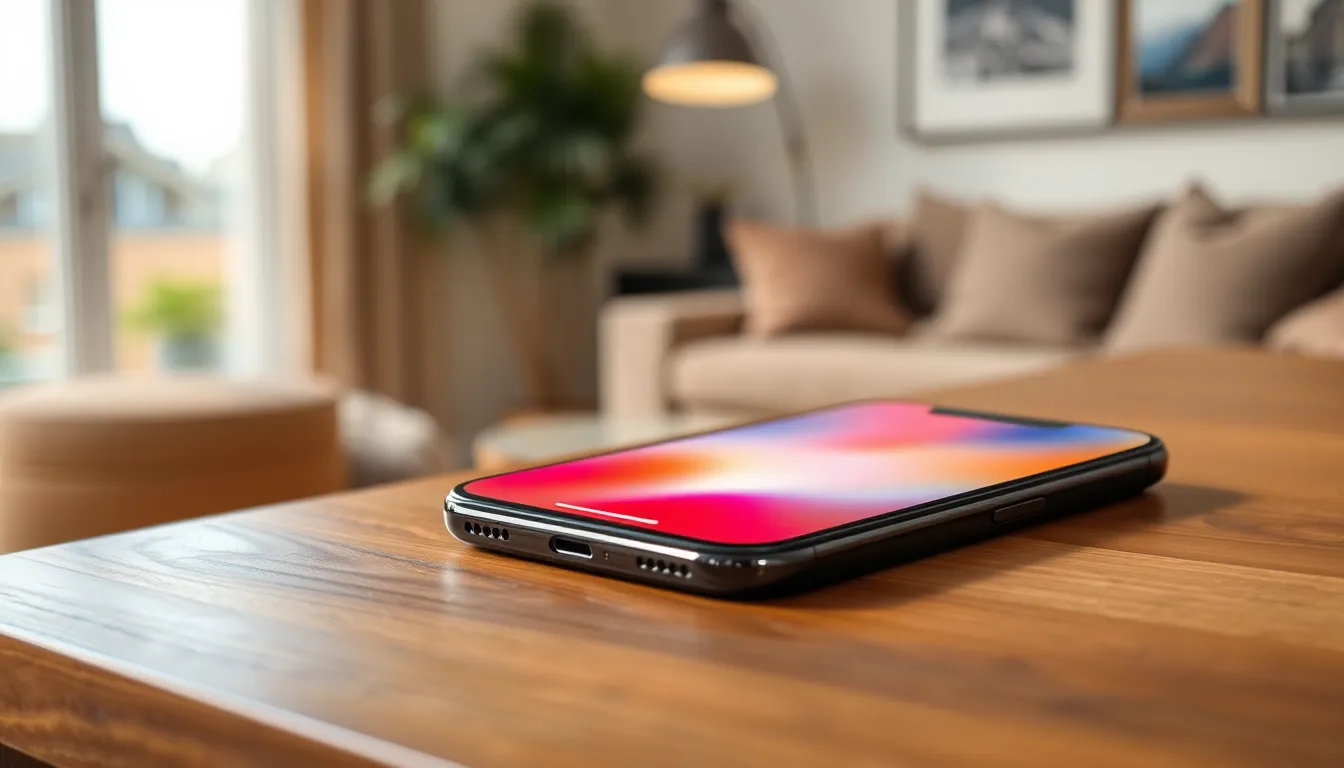When it comes to smartphones, the iPhone XS is like that cool kid at school—stylish, popular, and always the center of attention. But as technology evolves, questions arise. Can this sleek device keep up with the latest trend: 5G? Spoiler alert: it can’t.
While the iPhone XS dazzles with its stunning display and impressive performance, it’s stuck in the 4G lane while the world zooms ahead into 5G territory. This means no super-fast downloads or lag-free streaming for XS users. But don’t toss your beloved phone just yet. There’s still plenty of charm in the XS that makes it a worthy companion, even if it can’t join the 5G party. Let’s dive deeper into what this means for users and why sticking with the XS isn’t the end of the world.
Table of Contents
ToggleOverview of iPhone XS
iPhone XS offers a stunning 5.8-inch Super Retina display, showcasing vibrant colors and sharp details. The device includes Apple’s A12 Bionic chip, which enhances performance and efficiency for various tasks. With a dual-camera system, it captures impressive photos and videos, even in low-light conditions, ensuring excellent imaging capabilities.
While iPhone XS supports advanced connectivity options like 4G LTE, it lacks compatibility with 5G networks. Users aiming for super-fast download speeds and enhanced streaming quality may seek alternatives, given the growing reliance on 5G technology. The device does, however, still function efficiently for most applications, allowing users to browse, stream, and communicate without significant issues.
Battery life remains strong, with up to 20 hours of talk time and up to 14 hours of internet use. Facetime and video calls work seamlessly on the device, making it suitable for both personal and professional needs. Additionally, wireless charging adds a level of convenience for users.
Despite limitations regarding 5G, iPhone XS remains a reliable smartphone for various tasks. Many users appreciate its elegant design and performance features, offering valuable experiences even without the latest technology. The device’s durability and continued software support further solidify its position as a viable option for those satisfied with a 4G connection.
Overall, iPhone XS stands as a strong competitor within its category, appealing to users who prioritize design and established technology. With consistent software updates, it continues to provide a satisfying user experience.
Understanding 5G Technology

5G technology represents the fifth generation of mobile network technology. This advancement promises significantly higher speeds, lower latency, and greater connectivity compared to previous generations.
What Is 5G?
5G utilizes higher frequency bands, providing faster data rates and increased capacity. Multiple advanced technologies, such as millimeter waves and Massive MIMO, enhance connectivity. With this generation, users experience data speeds up to 100 times faster than 4G. Major mobile carriers have begun deploying 5G networks across urban and suburban areas, continuously expanding coverage. Consequently, users can expect seamless connectivity for various devices, including smartphones, tablets, and IoT gadgets.
Benefits of 5G Connectivity
5G connectivity offers numerous advantages for everyday users. Increased download and upload speeds enable faster streaming and smoother online gaming experiences. Lower latency enhances real-time interactions, critical for applications like video conferencing and virtual reality. Reliable connectivity supports multiple devices simultaneously, making smart homes and IoT applications more functional. Additionally, industries benefit from improved automation and analytics through better network reliability. Overall, 5G technology significantly elevates the user experience across many digital platforms.
Compatibility of iPhone XS with 5G
The iPhone XS lacks compatibility with 5G technology due to specific hardware limitations. Apple’s design for this model focuses on 4G LTE capabilities, significantly constraining its ability to connect to faster networks. The A12 Bionic chip, while powerful for its time, does not include the necessary components to support 5G connectivity. Consequently, users seeking next-generation internet speeds must look to newer models with integrated 5G hardware. In a market increasingly favoring faster connections, the absence of 5G may push some users to upgrade.
Software support remains vital for smartphone functionality, yet the iPhone XS has limitations in this area too. Apple’s commitment to regular iOS updates means it continues to receive the latest features and improvements. However, the lack of 5G hardware functionality means users cannot entirely benefit from advancements made in new software related to 5G usage. As mobile applications evolve to leverage 5G speeds, the iPhone XS may fall short in delivering enhanced performance alongside those updates. Recognizing these constraints can help users make informed choices regarding their connectivity needs.
User Experience on iPhone XS
Users of the iPhone XS experience a solid device despite its lack of 5G capability. The phone’s 4G LTE support provides reliable performance for browsing and streaming.
Real-World Performance
In daily use, the iPhone XS excels at handling apps and multimedia tasks. Its A12 Bionic chip ensures quick load times and seamless multitasking. Users find that video streaming feels smooth on its 5.8-inch Super Retina display. The camera’s low-light performance captures quality images without frustration. Wi-Fi capabilities complement the overall experience by offering faster connections in non-5G areas. Users often report satisfaction with battery life, which sustains up to 14 hours of internet use. While the absence of 5G limits future-proofing, the current performance satisfies most daily needs.
Alternatives for 5G Access
For those desiring 5G, several alternatives exist. Newer iPhone models, such as the iPhone 12 or later, offer built-in 5G capabilities. Transitioning to these models provides access to faster download speeds and improved streaming quality. Carriers also offer 5G-compatible devices across various brands, presenting options beyond Apple’s ecosystem. Users should evaluate their needs and consider compatibility with local 5G networks. Exploring budget-friendly choices in 5G smartphones can also expand selections. While the iPhone XS remains a solid device, the advantages of 5G access continue to grow.
The iPhone XS stands out for its design and performance but falls short of supporting 5G technology. While users can enjoy a reliable experience with 4G LTE for browsing and streaming, the device lacks the hardware necessary for the faster speeds that 5G offers. As mobile technology continues to evolve, those seeking the benefits of 5G may want to consider newer models that provide this capability.
Despite its limitations, the iPhone XS remains a solid choice for users who prioritize style and functionality over the latest connectivity advancements. It serves well for everyday tasks and continues to receive software support, making it a dependable option in a rapidly changing smartphone landscape.

